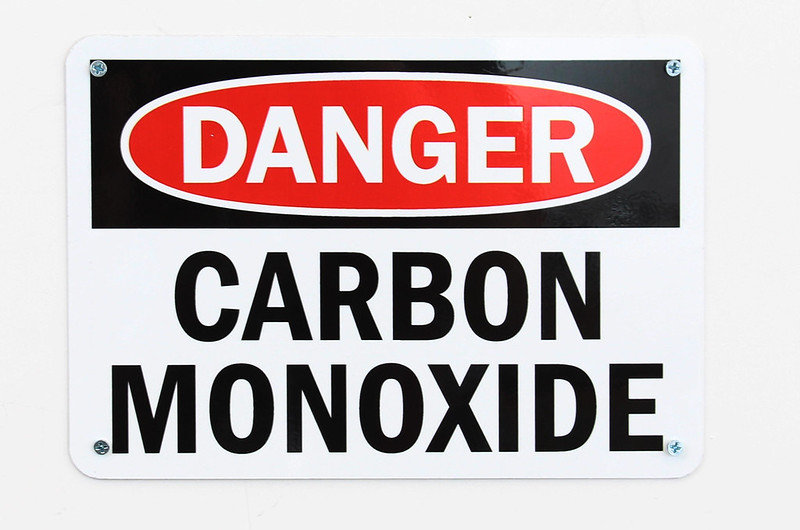BS EN 50291
Contents |
[edit] Introduction
The British Standards Institution (BSI) is the UK National Standards Body (NSB). It publishes standards and provides a range of books, self-assessment tools, conferences and training services. It also represents UK economic and social interests in European and international standards organisations.
[edit] Detection of carbon monoxide
BS EN 50291 is a two part manufacturing standard that applies to the production of equipment designed to detect carbon monoxide in domestic structures. Carbon monoxide is a poisonous, odourless and colourless gas. When carbon monoxide gas is breathed in it gets into the blood stream and behaves like oxygen, attaching itself to red blood cells which can then no longer carry oxygen. This leads to oxygen starvation and causes the cells and tissues to die.
Carbon monoxide is produced from the combustion of smouldering and burning carbon materials but can also be produced from incorrectly installed or ageing gas boilers. It is recommended that carbon monoxide alarms are located in any room containing fuel-burning appliances.
[edit] History of the standard for carbon monoxide gas detectors
Until 2010, BS 50291:2001 existed as a single standard, but in 2011 it split into two parts. Part 1 (2018) applies to electrically operated apparatus suitable for domestic premises including caravan holiday homes. These are meant for continuous operation in a single location (such as a home) and are not designed to be moved from one setting to another. BS EN 50291: Part 1 (2018) replaces BS EN 50291-1:2010+A1:2012.
Part 2 (2019) is designed for electrical apparatus for the detection of carbon monoxide in recreational vehicles and recreational crafts (such as boats). Due to their portable nature, these devices may be subject to movement or vibration and should be tested for more rigorous conditions. BS EN 50291: Part 2 (2019) replaces BS EN 50291-2:2010.
BS EN 50291 does not apply to other types of combustible gases (which are included in BS EN 50194-1), industrial facilities (covered in BS EN 45544) or commercial premises. Nor does it cover carbon monoxide measurement for smoke and fire detection or carbon monoxide measurement in car parks and tunnels (BS EN 50545-1).
[edit] Part 1 changes from 2010
In the 2018 version of Part 1, changes from 2010 include:
- Mandatory end of life indicator with audible and visible warning.
- Additional guidance regarding expected battery capacity.
- Requirements for mains powered alarms and back-up power.
- An increased ability to recognise additional possible interference gases.
- Potential for optional alarm silencing.
- Clarification of audible and visual alarm requirements (including end of life warnings and low carbon monoxide level warnings).
- Alignment with sound output alarms for smoke alarms (under BS EN 14604).
[edit] How the devices work
Carbon monoxide alarms complying with BS EN 50291 contain electrochemical cells that are designed to detect the presence of carbon monoxide gas. The apparatus may be mains powered or battery powered.
The objective of the device is to detect defective fossil fuel or solid fuel appliances so that they can be repaired or replaced. The devices ignore transient levels of carbon monoxide gas produced in low concentrations from sources such as smouldering incense or cigarettes, but when the concentrations and duration of exposures reach hazardous levels the carbon monoxide alarm will produce an audible warning signal.
In accordance with the standard, devices are tested for a wide range of performance and durability measures. This includes sensor reaction times, temperature resistance and minimum alarm volume levels.
Carbon monoxide gas detectors covered under this standard should have a BS EN 50291 mark and a British Standards' Kitemark (or equivalent European mark). They should be installed in accordance with manufacturers’ instructions, typically at head height in each room with a combustion appliance. They should be tested regularly, and batteries replaced as required. Ideally they should give a warning when batteries are approaching the end of their life.
Part 1 and Part 2 of the standard are available to download for a fee from the BSI website.
[edit] Related articles on Designing Buildings Wiki
Featured articles and news
Homes England creates largest housing-led site in the North
Successful, 34 hectare land acquisition with the residential allocation now completed.
Scottish apprenticeship training proposals
General support although better accountability and transparency is sought.
The history of building regulations
A story of belated action in response to crisis.
Moisture, fire safety and emerging trends in living walls
How wet is your wall?
Current policy explained and newly published consultation by the UK and Welsh Governments.
British architecture 1919–39. Book review.
Conservation of listed prefabs in Moseley.
Energy industry calls for urgent reform.
Heritage staff wellbeing at work survey.
A five minute introduction.
50th Golden anniversary ECA Edmundson apprentice award
Showcasing the very best electrotechnical and engineering services for half a century.
Welsh government consults on HRBs and reg changes
Seeking feedback on a new regulatory regime and a broad range of issues.
CIOB Client Guide (2nd edition) March 2025
Free download covering statutory dutyholder roles under the Building Safety Act and much more.
Minister quizzed, as responsibility transfers to MHCLG and BSR publishes new building control guidance.
UK environmental regulations reform 2025
Amid wider new approaches to ensure regulators and regulation support growth.
BSRIA Statutory Compliance Inspection Checklist
BG80/2025 now significantly updated to include requirements related to important changes in legislation.























